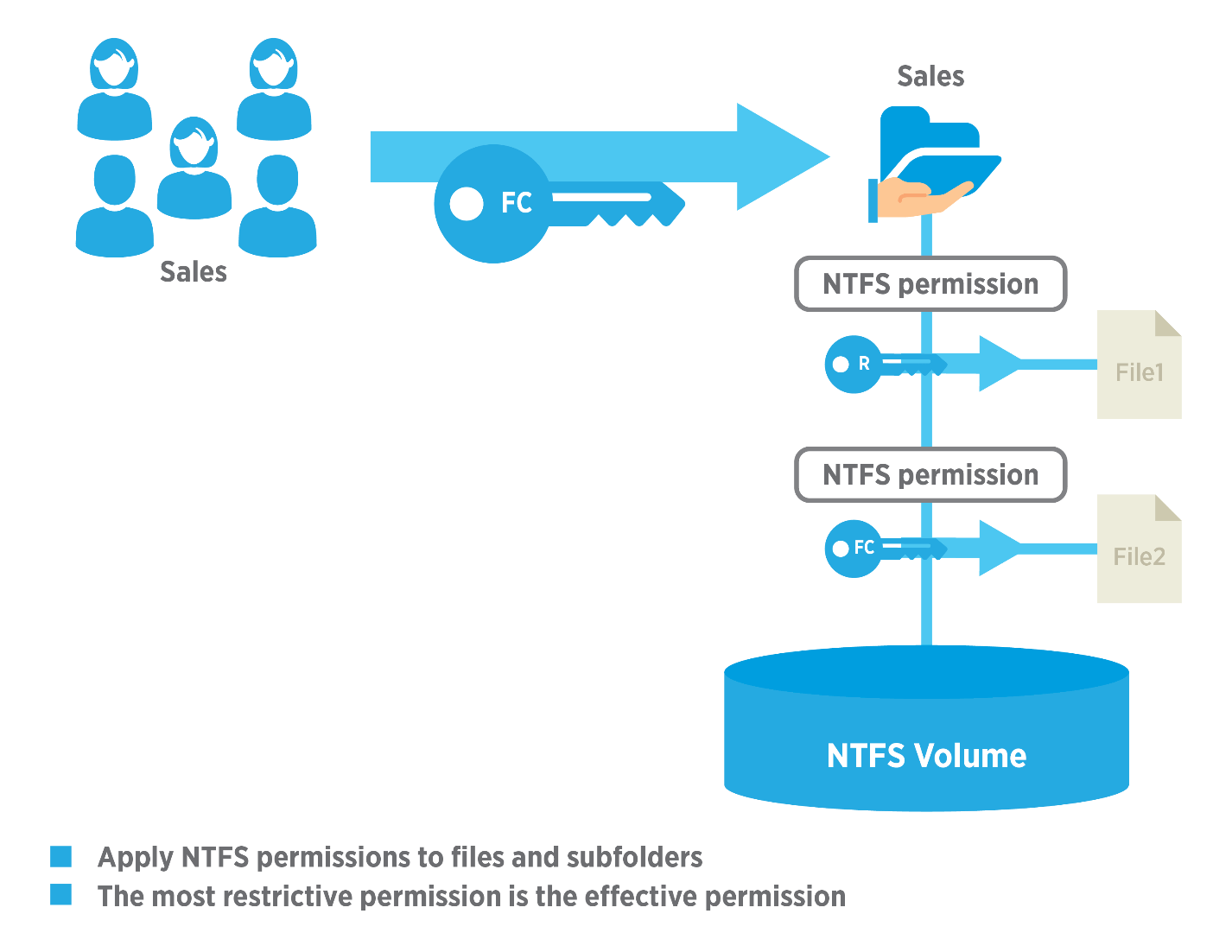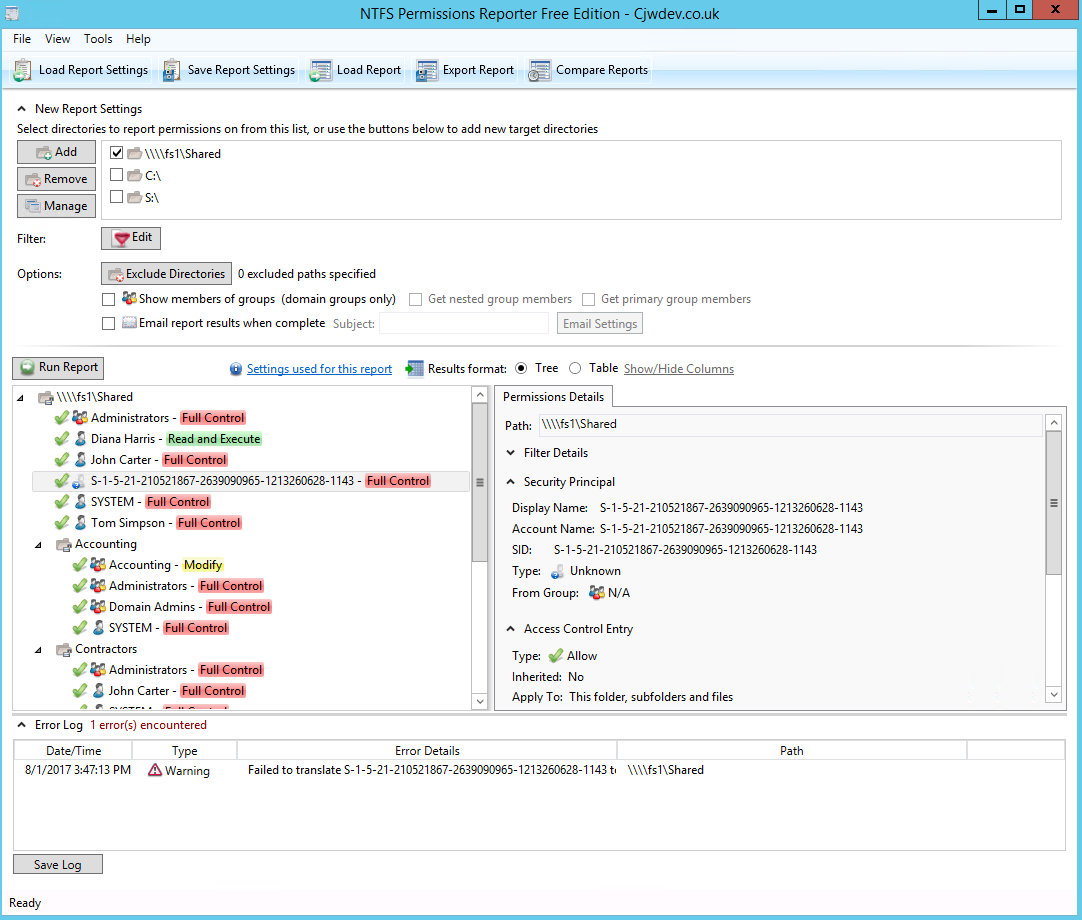Ntfs Vs Share Permissions

What is the difference between NTFS permissions and Share Permissions? How do they work together? Read more how to use them correctly!Difference between NTFS Permissions and Share PermissionsShare permissions are applied when a shared folder is accessed over a network. It is a common misconception to think that share permissions works in a different way.
When you log in locally to a Windows machine (even if a file or folder is shared to other users within your network), every time you access an object locally, NTFS permissions apply and share permissions do not apply. It does not matter how restrictive share permissions have been set up on your network, if you have access to the object and you are logged into the workstation or server that “owns” the file or folder, you will be granted access.
Combining NTFS Permissions and Share PermissionsWhen using share permissions and folder permissions please keep in mind, that you can apply different NTFS permissions to each folder within a shared folder. Working this way will ensure a permission strategy for each kind of data located in an appropriate folder structure.A frequently asked question when managing Windows Server environments is: once you combine share permissions with NTFS permissions, how do these two types of permissions work together? The answer is rather simple and helps you determine the most effective form of permission for a shared folder. Both sets of permissions get applied and the more restrictive of the two takes precedent. To give you a better idea, take a look at the below example.You give “Full Control” NTFS permissions to the “FileShare-Operatoren” group for a folder called MyFolder, as seen in the image below. Effective NTFS PermissionsBest Practices.

A common practice by many businesses is to share a folder by giving full access to a group made up of everyone, then control who can access that folder using NTFS permissions. Always try to share folders with groups instead of individual people, as this makes administration tasks far simpler. To consolidate administration and group files into application, data, and home folders, centralize all home and public folders separately from your applications and operating system.

Doing so provides the following benefits: a) permissions may only be assigned to folders, not individual files and b) backing up will be less complex because you will not need to back up application files, as all home and public folders will be consolidated in one location. When you assign permissions for working with data or application folders, assign the “Read & Execute” permission to the Users group and Administrators group. This will prevent application files from being accidentally deleted or damaged by users or viruses. Always assign the most restrictive permissions that still allow users to perform required tasks. For example, if users only need to read information in a folder and should never delete or create files, assign the “Read” permission.
Organize your resources so that folders with the same security requirements are located within one folder. For example, if users require “Read” permission for several application folders, store those folders within a single folder. This will allow you to share that larger folder instead of sharing each individual application folder.
Use intuitive share names so that users can easily recognize and locate resources. For example, for the Application folder, use “Apps” as the share name.
You should only use share names that can be used across all client operating systems.
Event Viewer
CertificationsSite ToolsForum Statsan error occurred while processing this directiveLinksWindows 2003 NTFS and Share PermissionsThe concept of permissions in a Microsoft environment is one of the more confusing subjects that certification candidates face, but a very necessary topic to know as many of Microsoft's certification exams test on this. This guide aims to help you understand the different the various types of permissions and how to use them in a Windows 2003 environment.NTFS file permissions are used to control the access that a user, group, or application has to folders and files. They are referred to as NTFS permissions because a drive must be formatted with NTFS in order to utilize these permissions.NTFS File Permissions:NTFS file permissions are used to control the access that a user, group, or application has to files.